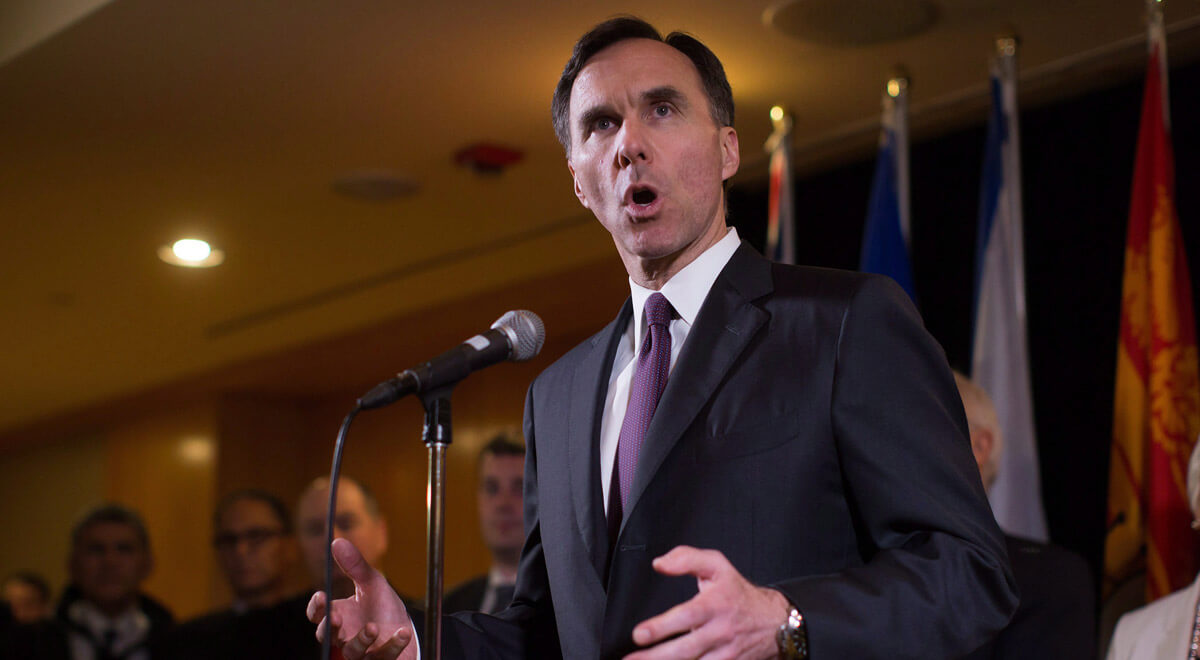Tax fairness, in name only
Ottawa is toying with taking away so-called tax loopholes for the rich, but they won't fix other parts of the tax code that punishes this same group
Advertisement
Ottawa is toying with taking away so-called tax loopholes for the rich, but they won't fix other parts of the tax code that punishes this same group

Is Canada’s tax system fair? That question has been the subject of a fiery debate across Canada ever since federal Finance Minister Bill Morneau proposed changes to small business tax rules.
The undertone of this proposal is that high-income Canadians are taking advantage of the tax system, to the detriment of the middle class. To address this, the federal government is looking to reform the Income Tax Act (ITA) by targeting incorporated professionals. A consultation paper released earlier this year talks about eliminating tax loopholes for sprinkling income using private corporations, holding a passive investment portfolio inside a private corporation and converting a private corporation’s regular income into capital gains.
If you’re a high-income Canadian, it’s a big deal. These changes would cost incorporated professionals anywhere from tens of thousands to possibly more than a hundred thousand dollars a year in taxes.
But to return to my original question: is this fair? It really comes down to your perspective. To the majority of Canadians, allowing professionals, entrepreneurs and farmers (at times I’ve been called all three) to structure their affairs to capitalize on tax advantages in ways they they can’t is unfair. And yet, no one seems to mind when the reverse is true.
I’ve never heard Morneau mention how high-income Canadians (and I use that term loosely) are at a disadvantage when it comes to things like RRSP contributions. While the annual contribution limits are set at 18% of the previous year’s earned income, they are capped at about $25,000 a year (although indexed to inflation). Once your income exceeds about $140,000, there’s no more contribution room to be earned.
This contribution limit strikes me as an unfair and arbitrary cut-off. About 95% of all Canadians make less than $140,000 a year. Accordingly, they likely never think about the limit because it will never apply to their circumstances. But then there are those readers right now saying “that’s me” under their breath as it sinks in that they will never be in the position to make a maximum RRSP contribution.
So here’s the thing. A professional making $300,000 a year might be able to save perhaps $50,000 in taxes through a corporate structure. A professional earning over $500,000 a year might be able to save over $100,000 annually. However, just because they’re currently benefiting from one quirk of tax policy doesn’t mean it should be considered “fair” to deny them of another.
Critics would make a lot more hay if they’d ask for real consistency in tax policy. If the government really believes it is reasonable for people to be able to deduct up to 18% of their earned income through an RRSP contribution, then why impose an arbitrary contribution limit? If we are really trying to be fair and consistent, a person earning $500,000 a year should be allowed to make a $90,000 annual RRSP contribution. They would still end up paying about 53% in tax on the last $200,000 of earned income if they did.
You can’t have it both ways. If the intention is to close so-called “loopholes” that predominantly benefit the rich, you should also want to remove the arbitrary barriers that impede their economic progress.
To my mind, the absolute least that the federal government could do would be to concurrently put in a graduated system (call it a “marginal deduction rate”) where people can deduct 18% of their income on the first $140,000 and then, say, 10% on all additional income—with no income limits whatsoever. In this scenario, someone earning $500,000 would get an additional 10% deduction on their last $360,000 in earnings. Add $36,000 of new contribution room to the pre-existing $25,000 contribution room and you’re looking at a $61,000 RRSP contribution. That additional contribution room would generate a tax refund of nearly $18,000. Of course, the taxpayer would still be paying the top rate (about 53%) on most of the remaining $439,000.
The point to remember is that the public policy discussion we are having now is about fairness. It’s not about retribution, class warfare or any of the other silly things some people are calling it. Anyone who is serious about being fair needs to look at the whole picture without cherry-picking evidence or pretending that generally accepted principles don’t apply to some. So far, both sides of this discussion are telling only part of the story.
John De Goey is a Portfolio Manager with Industrial Alliance Securities Inc. (IAS) and the author of The Professional Financial Advisor IV. The views expressed are not necessarily shared by IAS. Industrial Alliance Securities Inc. is a member of the Canadian Investor Protection Fund.
MORE ABOUT TAXES:Share this article Share on Facebook Share on Twitter Share on Linkedin Share on Reddit Share on Email